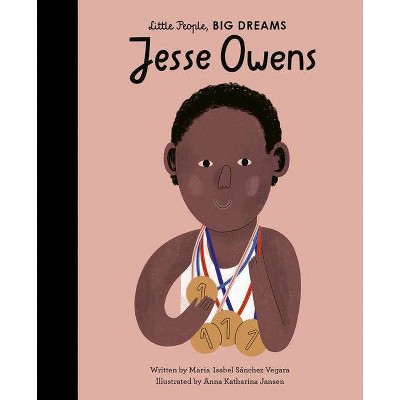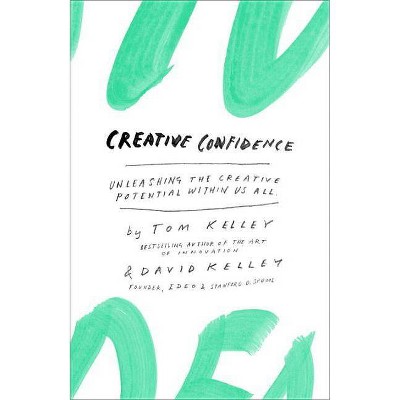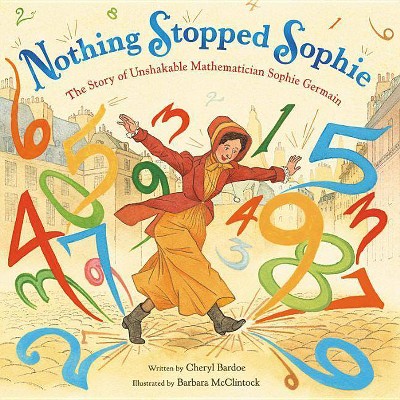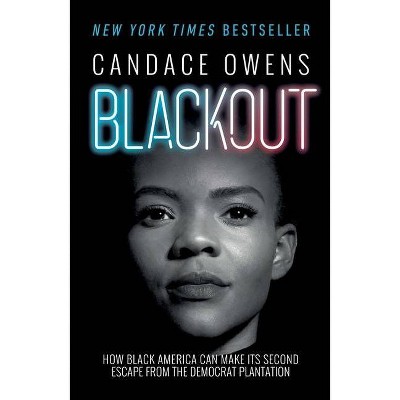Creative People Must Be Stopped - by David A Owens (Hardcover)
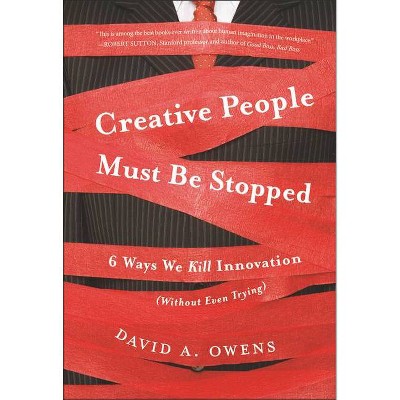
Similar Products
Products of same category from the store
AllProduct info
<p/><br></br><p><b> About the Book </b></p></br></br>"A framework for overcoming the six types of innovation killersEverybody wants innovation--or do they? Creative People Must Be Stopped shows how individuals and organizations sabotage their own best intentions to encourage "outside the box" thinking. It shows that the antidote to this self-defeating behavior is to identify which of the six major types of constraints are hindering innovation: individual, group, organizational, industry-wide, societal, or technological. Once innovators and other leaders understand exactly which constraints are working against them and how to overcome them, they can create conditions that foster innovation instead of stopping it in its tracks. The author's model of constraints on innovation integrates insights from the vast literature on innovation with his own observations of hundreds of organizations. The book is filled with assessments, tools, and real-world examples. The author's research has been featured in the New York Times, Wall Street Journal, London Guardian and San Jose Mercury News, as well as on Fox News and on NPR's Marketplace Includes illustrative examples from leading organizations Offers a practical guide for bringing new ideas to fruition even within a previously rigid organizational culture This book gives people in organizations the conceptual framework and practical information they need to innovate successfully"--<p/><br></br><p><b> Book Synopsis </b></p></br></br><b>A framework for overcoming the six types of innovation killers</b> <p>Everybody wants innovation--or do they? <i>Creative People Must Be Stopped</i> shows how individuals and organizations sabotage their own best intentions to encourage outside the box thinking. It shows that the antidote to this self-defeating behavior is to identify which of the six major types of constraints are hindering innovation: individual, group, organizational, industry-wide, societal, or technological. Once innovators and other leaders understand exactly which constraints are working against them and how to overcome them, they can create conditions that foster innovation instead of stopping it in its tracks.</p> <p>The author's model of constraints on innovation integrates insights from the vast literature on innovation with his own observations of hundreds of organizations. The book is filled with assessments, tools, and real-world examples.</p> <ul> <li>The author's research has been featured in the <i>New York Times, Wall Street Journal, London Guardian</i> and <i>San Jose Mercury News, </i> as well as on Fox News and on NPR's <i>Marketplace</i></li> <li>Includes illustrative examples from leading organizations</li> <li>Offers a practical guide for bringing new ideas to fruition even within a previously rigid organizational culture</li> </ul> <p>This book gives people in organizations the conceptual framework and practical information they need to innovate successfully.</p><p/><br></br><p><b> From the Back Cover </b></p></br></br>Why do so many organizations continue to kill good ideas and to fail in their innovation attempts despite this wealth of research and advice?--From the Introduction <p>While most organizations give lip service to promoting innovation and creative ideas, they all too often sabotage outside-the-box thinking among the rank and file. In this book, David Owens has identified the six dominant types of constraints (individual, group, organizational, industry-wide, societal, and technological) that can keep creative new ideas from being formulated, developed into marketable products and services, or adopted by the intended users. <i>Creative People Must Be Stopped</i> organizes these innovation killers into a conceptual framework that demystifies what innovationis, how it happens, and how we stop it without even trying. This proven framework has been usedto diagnose the primary causesof innovation failure within hundreds of organizations that have gone onto develop strategies that foster innovation rather than stopping it in its tracks.</p> <p>Filled with illustrative examples from real-world organizations, the book explores each type of constraint in detail and shows how it operates and why. This analysis is followed by a discussion of ways that particular constraints can be overcome. Every chapter concludes with a Constraints Diagnostic Survey. These asessments are based on Owens's research and consulting work, and they provide a pointer to the most urgent and potentially limiting constraints an organization may be facing. In addition, <i>Creative People Must Be Stopped</i> contains an exercise tool designed to help move leaders toward action to overcome the constraints that have been identified. Owens also explores the big-picture issues that can arise when spearheading an innovation team and discusses the steps needed to help organizations become more strategic about innovation.</p> <p>Creative People Must Be Stopped gives leaders the tools they need to foster an atmosphere of creativity and innovation.</p><p/><br></br><p><b> Review Quotes </b></p></br></br><br><p><b><i>"</i></b><i>Creative People Must Be Stopped</i> is among the best books ever written about human imagination in the workplace. David Owens is a master innovator, having practiced his craft as a product designer, researcher, teacher, creativity coach, and executive. The breadth and depth of his experience fills every page of this little gem, which is chock full of hundreds of big and little steps that you can take right now to do more creative work and to lead more innovative teams and organizations."<br /> --<i><b>Robert Sutton, Stanford Professor</b></i><b><i><br /> Author of the New York Times bestseller</i> Good Boss, Bad Boss</b></p> <p><b><i>"</i></b>This is no rarefied academic treatment on innovation as an abstract ideal, but a nuts and bolts handbook to dissecting our thought patterns about innovation. Owens dispels the myth that innovation is a binary trait that either exists or does not in a given product, process or business model. <i>Creative People Must be Stopped</i> addresses the myriad ways that novel ideas can fail in the marketplace. Working through a combination of thought experiments and real world examples, the book demonstrates how failures in understanding the context for innovation can prove every bit as deadly to progress as failures of imagination."<br /> --<b>Mark Rowan, President</b><br /> <b>Griffin Technology Inc.</b></p> <p><b><i>"</i></b>Dave Owens has delivered the survival guide every would-be innovation team requires before entering the fracas battle of bringing ideas to life. Read '6 Ways We Kill Innovation' if you are serious about making stuff and making stuff happen in this dangerous world for good ideas and the creative people who love them."<br /> --<b>Peter Durand, Alphachimp Studio</b><br /> Leading expert in graphic facilitation</p><br><p/><br></br><p><b> About the Author </b></p></br></br><p><b>DAVID A. OWENS</b> is professor at Vanderbilt's Graduate School of Management. He specializes in management, innovation, and product design, and has been featured in the <i>New York Times, Wall Street Journal</i>, Fox News, and NPR's <i>Marketplace</i>. Recently he served as CEO of Griffin Technology Inc.</p>
Price History
Price Archive shows prices from various stores, lets you see history and find the cheapest. There is no actual sale on the website. For all support, inquiry and suggestion messagescommunication@pricearchive.us

